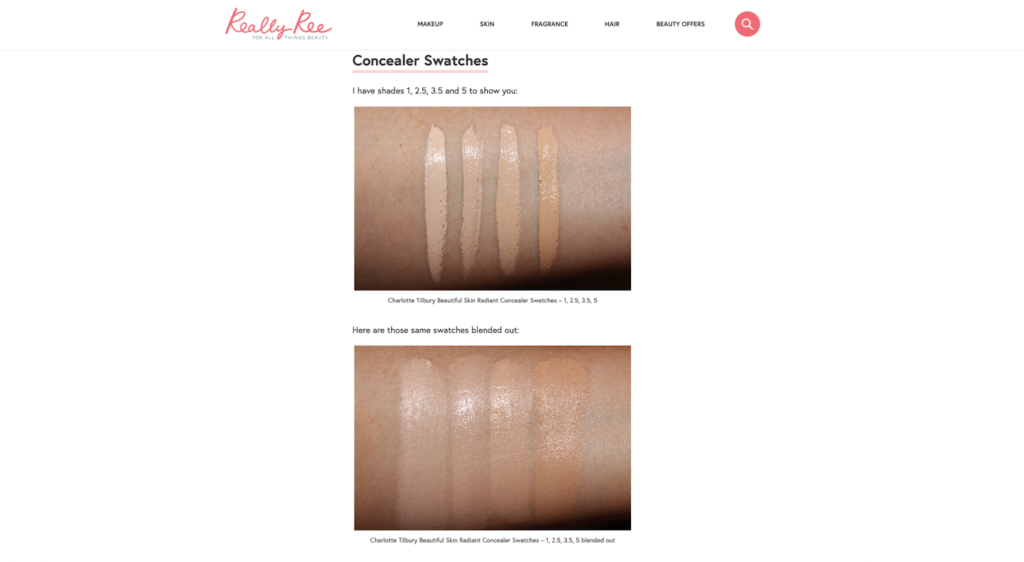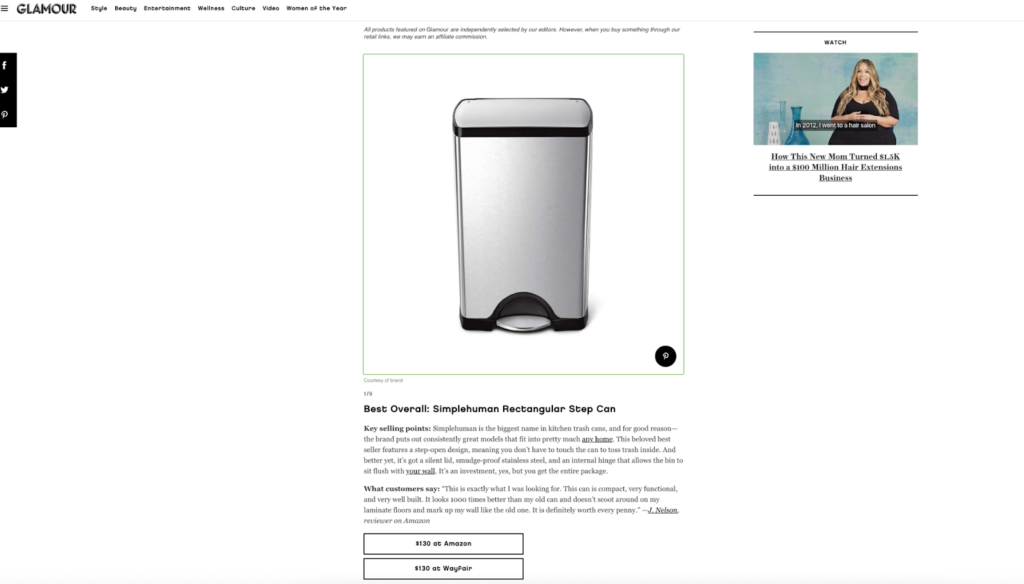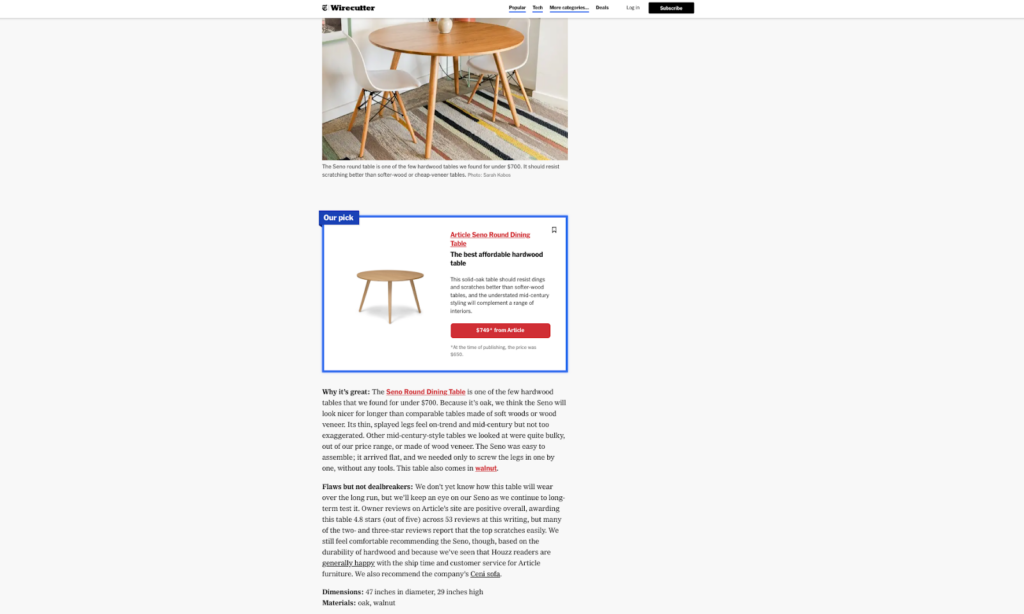The modern consumer sees product reviews as essential to the shopping experience. According to data by Statista, nearly 70 percent of online shoppers regularly read one to six customer reviews before making a purchasing decision.
Product reviews have also become a lucrative way for publishers, content creators, and affiliates like you to earn affiliate revenue—all while providing value to your audience.
Designing these reviews to gain traction with search engines expands your readership while improving your earning potential. A 2019 Forrester study discovered that 91 percent of organizations leading in SEO maturity found the impact of SEO on revenue “very profitable.”
But Google constantly updates its product to promote the best content possible. Staying up-to-date on what Google expects of your content can help you maintain (or recover) your search engine rankings.
Learn more about Google’s product review update for September 2022 and what you can do to keep your content ranking.
An overview of Google’s product review update
Released on September 20th, the Google product review update is the fifth iteration of an update that rewards high-quality product reviews. “The overall focus is on providing users with content that provides insightful analysis and original research, and is written by experts or enthusiasts who know the topic well,” Google told SearchEngineLand.
Product reviews that meet the new standards will rise to the top. Reviews that don’t meet the new standards aren’t explicitly penalized but may quickly get buried under more insightful competitors.
This update only applies to English-language content, but Google hopes to eventually roll out a similar update for other languages.
Google’s focus on product reviews is ongoing and may continue evolving. Staying up-to-date on the latest algorithm changes allows you to rise above competitors.
Which publishers and content creators will be affected by this update?
Publishers and content creators who create a lot of English-language product reviews, ranked product lists, and comparison reviews that include affiliate links must pay special attention to Google’s latest update. If your reviews tend to be surface-level or reiterate information readers can find on the manufacturer’s website, your search rankings may suffer.
Luckily, you can do something about it. Revise your current approach to match Google’s new guidelines and revisit your published content. Because Google’s update rewards high-quality reviews, altering your approach will help you create premium, engaging content for your audience.
If you’re just starting your content monetization journey, study Google’s new requirements and apply these principles to your content to achieve SEO success.
Google’s September 2022 core update to the algorithm
Google also released a core update in September—a large algorithm update that affects a larger swathe of indexed web pages. Both of these updates could potentially affect your rankings.
Have you seen a change in your rankings and wondered which update applies to you? According to a statement released by Google on Twitter:
- If you produce product reviews, then your ranking change is probably related to that
- If not, then it might be related to the core update
For many publishers and other content creators who use affiliate links, the product review update will have the greatest impact on revenue.
Take these seven steps to improve your product reviews
Though this update significantly changes the product review playbook, it can also present an opportunity for enterprising publishers and creators. Here are a few steps to preserve (or even enhance) your search rankings in light of Google’s new standards.
- Go deeper than the manufacturer’s website
- Emphasize first-hand experience
- Back up your opinion with data
- Provide original visuals
- Offer multiple choices
- Beef up your product roundups
- Keep Google’s list of best practices on hand
1. Go deeper than the manufacturer’s website
People read product reviews to make better purchasing decisions. The more thorough you can be, the better. This means that you need to go beyond the superficial. Don’t just regurgitate information readers can find on the manufacturer’s website.
Go deeper by:
- Describing the pros and cons of the product in detail
- Discussing how the product performs in different areas
- Addressing the design choices that make a product excel (or not)
- Comparing the product to competitors or previous versions of the product
- Identifying the use cases a product could work for
Always consider your audience and where they are in their buyer’s journey. What information do they need to make a good decision? Pinpointing the answer to this question and working from there is key to creating the best product reviews possible.

For example, the Sleep Foundation’s Nectar mattress review details the product’s performance in areas relevant to the category, such as motion isolation, pressure relief, temperature control, and more. They also dive into topics such as the best sleeping position for the mattress, price range, and overall pros and cons.
2. Emphasize first-hand experience
Providing your firsthand experience with the product (or your contributors’) makes the review more beneficial for your audience. This approach will likely increase engagement and produce more conversions from a revenue standpoint. After all, your audience cares about your opinion because you’re an expert in your industry or niche. Your voice holds sway. Use that power and influence them to make good decisions.

An outdoor equipment contributor at CleverHiker provided a detailed overview of their firsthand experience using the REI Skyward Tent. Aside from diving into many facets of the product, she writes the review in a personal way that emphasizes her firsthand experience using it. For example, she mentions that the tent’s height helps her go through her gear without crouching and that it will likely replace her longtime favorite front-country camping tent.
These personal experiences emphasize her expertise in outdoor equipment and provide an overview of the practical details and experiences her audience can relate to.
3. Back up your opinion with data
Anyone can make a claim or express an opinion—especially online. To stand out, support your argument with facts.
Explain your reasoning if you think an item performs well. Any measurable information you can share gives additional weight to your review and helps it stand out against less robust reviews. If you can use quantitative data to back it up, do it.

For example, DC Rainmaker — a triathlete’s website about sports technology and travel — uses precise stats to illustrate the accuracy of a smartwatch. He doesn’t make general statements about how the watch performs. Instead, he shows the disparities between the grade-adjusted pace reading on the watch versus his actual exercise. This reinforces the authenticity of his review and provides valuable insights to readers.
4. Provide original visuals
They say a picture’s worth a thousand words, and that’s certainly the case for product reviews. Incorporating original visuals into your reviews provides unique insight into the product. Your audience can see the product’s appearance outside of perfectly polished manufacturer images.

You don’t need to be a master photographer for this to benefit your reviews. For example, Really Ree—a website that reviews beauty products—includes original images of the product packaging and swatches for all of her reviews.
Original visuals don’t just mean images. Adding video to your product reviews enriches the content and provides a different medium for your audience. It also offers the perfect opportunity to cross-promote your other channels.

The health and fitness content creators at Fitness Blender often embed informative YouTube video content into their blog posts when it complements the topic at hand. This gives their audience an alternative way to consume information while potentially expanding their reach by providing multiple places to follow their content.
5. Offer multiple choices for purchase
While reviews should guide your audience toward a purchasing decision, you ideally want to give them options. Google stated they might favor product reviews that provide readers with multiple merchants to purchase from. This allows the reader to make comparisons and decide which brand they’d prefer to buy from.

Giving your audience choice can be as simple as putting multiple affiliate links for different retailers next to each other, as Glamour has done in their trash can product roundup.
6. Beef up your product roundups
In an NPR/Marist poll about online shopping, 84 percent of respondents said they shop online because there are more product choices. But choice can be overwhelming.
Product roundups are popular because they allow readers to compare products and make more informed purchasing decisions. Publishers can also cross-promote any standalone product reviews they may have elsewhere on their site, growing their revenue-earning potential.
Similar to individual reviews, a product roundup shouldn’t just list basic product information and highlight the best on the list. Ensure that your roundups have plenty of information about every product listed. If you identify a product as the best or the worst, describe why you believe that and use evidence to support your argument.

For example, Wirecutter’s article about dining tables for under $1,000 compares various products and dives into the details of each product individually. Every article section could stand alone as its product review. This ultimately creates a substantial piece of content that provides the most information possible to the reader.
7. Keep Google’s list of best practices on hand
Google released thorough best practice documentation for product reviews and tips for writing great reviews to help publishers create the best content possible—both for Google’s algorithm and readers.
Consider incorporating these best practices into your existing content creation process to ensure every review is primed and ready for search engine crawlers. This can be as simple as adapting this resource into a best practices checklist that you incorporate into your content creation workflow and approval process.
Deepen your understanding of publisher analytics tools
The Partnerships Experience Academy (PXA) provides insights into the partnerships economy while providing more strategies for your business.
The latest publisher learning path, Publisher Tools Basics, provide a look into how impact.com’s Trackonomics and Pressboard tools—part of the impact.com for Publishers suite—make content publishing and monetization easier.
Get your free certification with the Publisher Tools Basics learning path.






